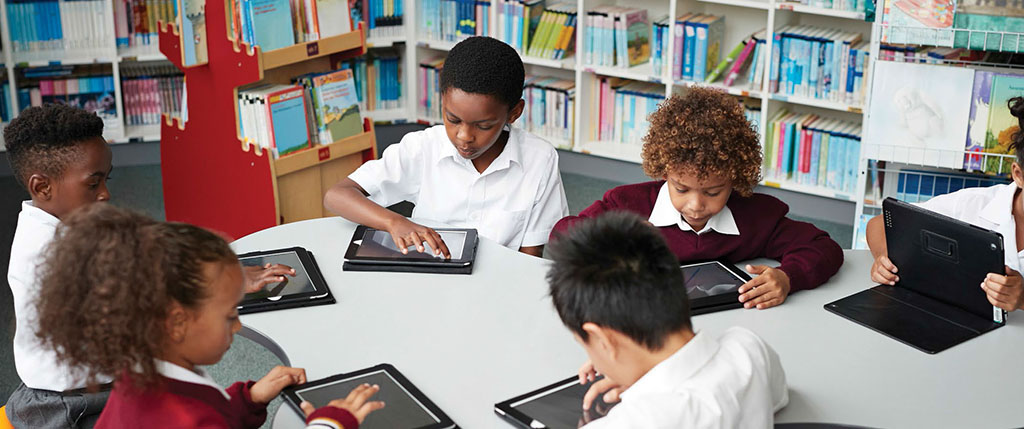Repurposing School Libraries As Vibrant Hubs and Centers of Change
One of the issues that district leaders tackled in Philadelphia at the June Tech & Learning Leadership Summit was how to change pedagogy to support new kinds of learning that technology has enabled.

One of the issues that district leaders tackled in Philadelphia at the June Tech & Learning Leadership Summit was how to change pedagogy to support new kinds of learning that technology has enabled. Changing ideas about technology, instruction, and learning have expanded our learning expectations. This has led some district leaders to repurpose the role of school libraries as learning hubs and centers of change.
Leaders in Dallas (TX) ISD have created a road map for changing pedagogy by reorienting school libraries and restructuring how they support new types of learning. Planning teams began with the following question: How do we create an infrastructure that assigns value to learning anywhere/anytime? Also, how do we use professional learning experiences to shift culture? They saw that they could use school libraries to animate both of these opportunities.
Shannon Terry, Dallas ISD’s executive director of professional and digital learning, says they have expanded their digital ecosystem to accommodate shifts in pedagogy and personal learning. “We now have the language that allows us to speak about the core competencies required to move the needle for instructional coaches,” she says. “This provides the lever for change.” Dallas district leaders view libraries as a key component of building capacity for new types of learning experiences for both students and teachers.
FINDING A WAY TO TAKE ON CHANGE TOGETHER
In Wake County (NC) Public Schools, district leaders have been fighting the national trend of replacing degreed librarians with technology staff with no certification requirements, and the transition of libraries to collaborative spaces with few books. Wake County’s emphasis is on creating a shared understanding that strong media programs consist of three parts: the school library media coordinator, the library space itself, and the programming within that space.
“We are not redefining libraries but rather being more explicit about what strong library programs include,” said Marlo Gaddis, Wake County CTO. “The district’s WakeForward Initiative, that our library team has developed, is built on the new AASL standards, Future Ready standards, ISTE standards, and our strategic plan.”
Linwood (NJ) Public Schools is also working to rebuild their libraries as learning hubs, says Lori Care, supervisor of curriculum and instruction. “Our libraries had been victims of multiple budget cuts, but thanks to a strong community push, we’re now working to rebuild our program,” she says. Their first step was to find the appropriate modern-day librarian to be housed in the space. In one school, they pulled a teacher from the classroom who had been working toward her library media specialist certification.
“This has been quite successful,” says Care. “Because she’s been a classroom teacher, she has a firm understanding of how to support curriculum goals.” Care says the district intends to continue rebuilding the library program to create new learning hubs that support ongoing changes in teaching and learning.
There is definitely a role for technology in reimagining libraries as learning commons and centers of innovation. Repurposing the library as a hub for teacher professional development and student-driven learning gives students and teachers tools and a common experience to manage changes in teaching and learning.
This article was revised on September 18, 2019.
Tech & Learning Newsletter
Tools and ideas to transform education. Sign up below.
Annie Galvin Teich has more than 25 years' experience in education writing and publishing. She is an edtech industry expert in content marketing and copywriting. As a regular contributor to Tech & Learning she focuses on the information needs of district decision makers.
